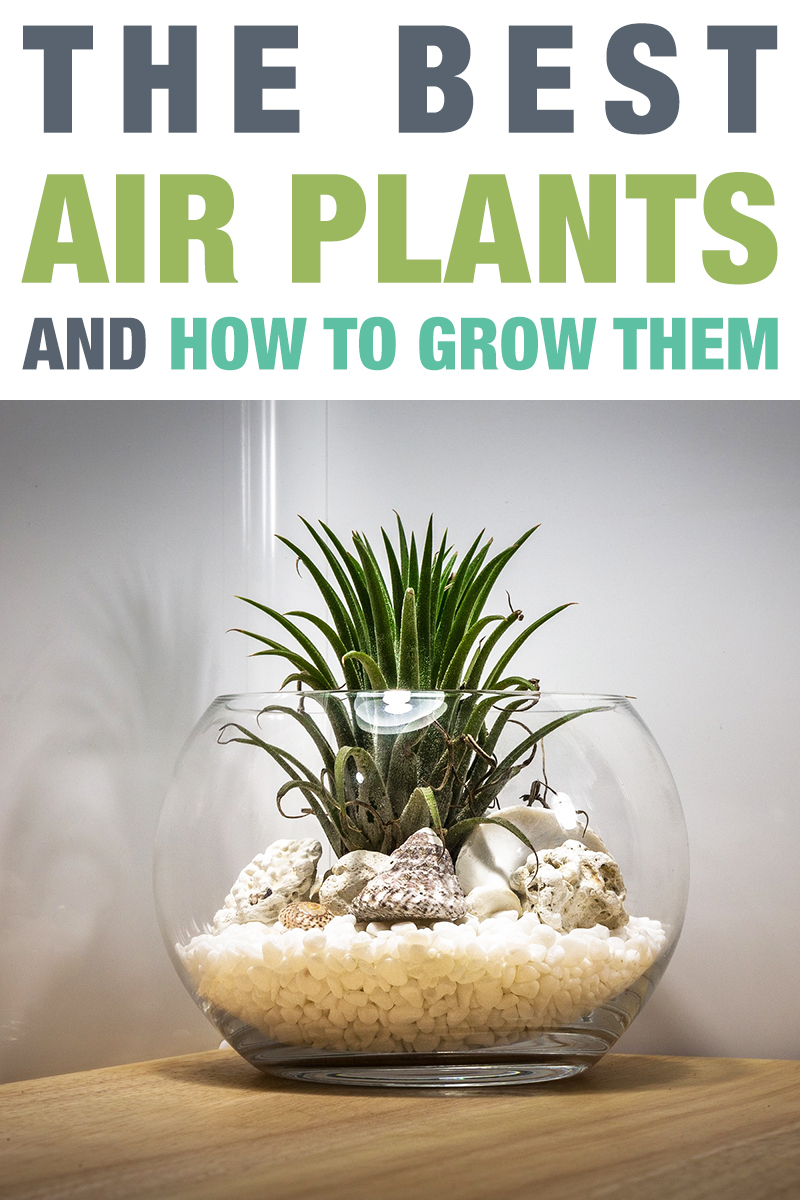Air plants are wonderful for a number of reasons. If you just don’t have that green thumb, but love plants or you like easy to care for green decor, air plants are ideal. So here is some info on the best air plants around and some tips on caring for them!
What are Air Plants?
Air plants are officially named Tillandsia. They are a type of epiphytic plant, meaning they typically use other plants or surround nature for support, without being parasitic or needing soil. Orchids, mosses, lichens, cacti, and other plants all fall into this same category. Some varieties have roots and some do not. Rooted plants typically use their roots to hang on to wherever they are stationed but don’t necessarily need them for gathering nutrients.
They are native to the warmer regions of North, Central, and South America. Air plants are called that because they get the majority of their nutrients from the air. There are probably around 650 different kinds of air plants, leaving plenty of choices for your home.
Choosing the Best Air Plants
Sizes:
As mentioned above, there are tons of types of air plants. Some are small and some are big. Here are some smaller plants that are recommended by Air Plant Supply Co that range in size from 1 inch to 10 inches:
- Tillandsia Ionantha Mexican
- Tillandsia Ionantha Rubra
- Tillandsia Ionantha Scaposa
- Tillandsia Ionantha Guatemalan
- Tillandsia Ionantha Fuego
- Tillandsia Argentea Thin
- Tillandsia Funkiana
- Tillandsia Tenuifolia
- Tillandsia Filfolia
- Tillandsia Butzii
Most of these varieties are really quite beautiful, featuring brightly colored stems and flowers. As tropical plants, they will only bloom once in their lifespan, but the bloom can last from a few days to a few months. Often the plants themselves are just as beautiful when they are not blooming.
Larger common plants can start out at around 4 to 6 inches tall and 5 to 7 inches wide, but may grow to three times as big. Some in nature have been known to grow as big as fifteen feet! There are just as many beautiful larger air plants in quite as many varieties. Here are a few you can check out:
- Tillandsia Seleriana
- Tillandsia Xerographica
- Tillandsia ‘Heather’s Blush’
- Tillandsia Streptophylla
- Tillandsia Tectorum
- Tillandsia Brachycaulos
- Tillandsia Caput Medusae
Leaf Color
You’ll notice that some plants have greener leaves while others have more silvery colored leaves. Not only is great aesthetically, but it can also help you choose which plant is right for you. The general rule of thumb is that the more silver the leaves the hardier the plant. These can withstand hotter conditions and don’t need to be watered as often. Greener plants require a bit more attention and regular care.
Caring for Air Plants
While different varieties may require different amounts of care, they are all extremely easy to care for.
Watering
Yes, air plants still need water. When you first receive your air plant it is a good idea to give it a good soak. Depending on the variety and size this may be an hour long soak or overnight. When you are done soaking the plant, simply remove it from the water and shake off the excess. The plant needs to be dry before it is placed in the display. A bit of moisture on the leaves is okay but do not let water gather at the base of the leaves or it could mold and kill the plant. Just make sure it is dry.
The plant does not need another soak for one to two weeks. Many people mist the plants in between soaks. This is fine and can increase the time needed between soaks, but again, do not let the water gather at the base. Remove dried, dead leaves carefully but if the plant dries out too much the leaves may curl up and turn brown at the tips. If this happens, you can trim off the dead tips with sharp scissors and then soak the plant. It should heal up just fine.
Light
These plants need bright light, but only from artificial or indirect sources. Some of the hardier plants like some sun, but direct sun for more than an hour will over dry and burn the plant. This is one reason why they make such good house plants. They do not thrive in direct sun. Plants can grow in size and even reproduce. “Pups” will look like leaves with their own distinct center. When the pup grows to about one third the size of its parent plant it can be gently pulled apart from its parent.
Air
Really, the main thing is that these plants need good air circulation around their leaves. So long as they have room to breathe, they are good to go! They are Air Plants after all!
Displaying Air Plants
Finally, there are numerous displays available for air plants. From driftwood to glass terrariums, they run the gamut. Air plants can be bundles and hung, draped on patio beams in shaded areas, set on shelves, or displayed in brass ornaments. There are so many creative ways to keep air plants indoors and out. Just try something out that works with your style!
Stay Up to Date with The Cottage Market by Joining our Mailing List!
| Want to stay in the know? I’d really love that! (((HUGS))) |
| Like … on Facebook | Follow … on Pinterest | Follow … on Instagram | |
 |






Wonderful article and a great site to browse around. I’ve been wanting an air plant for some time now, but have always felt a little intimidated.